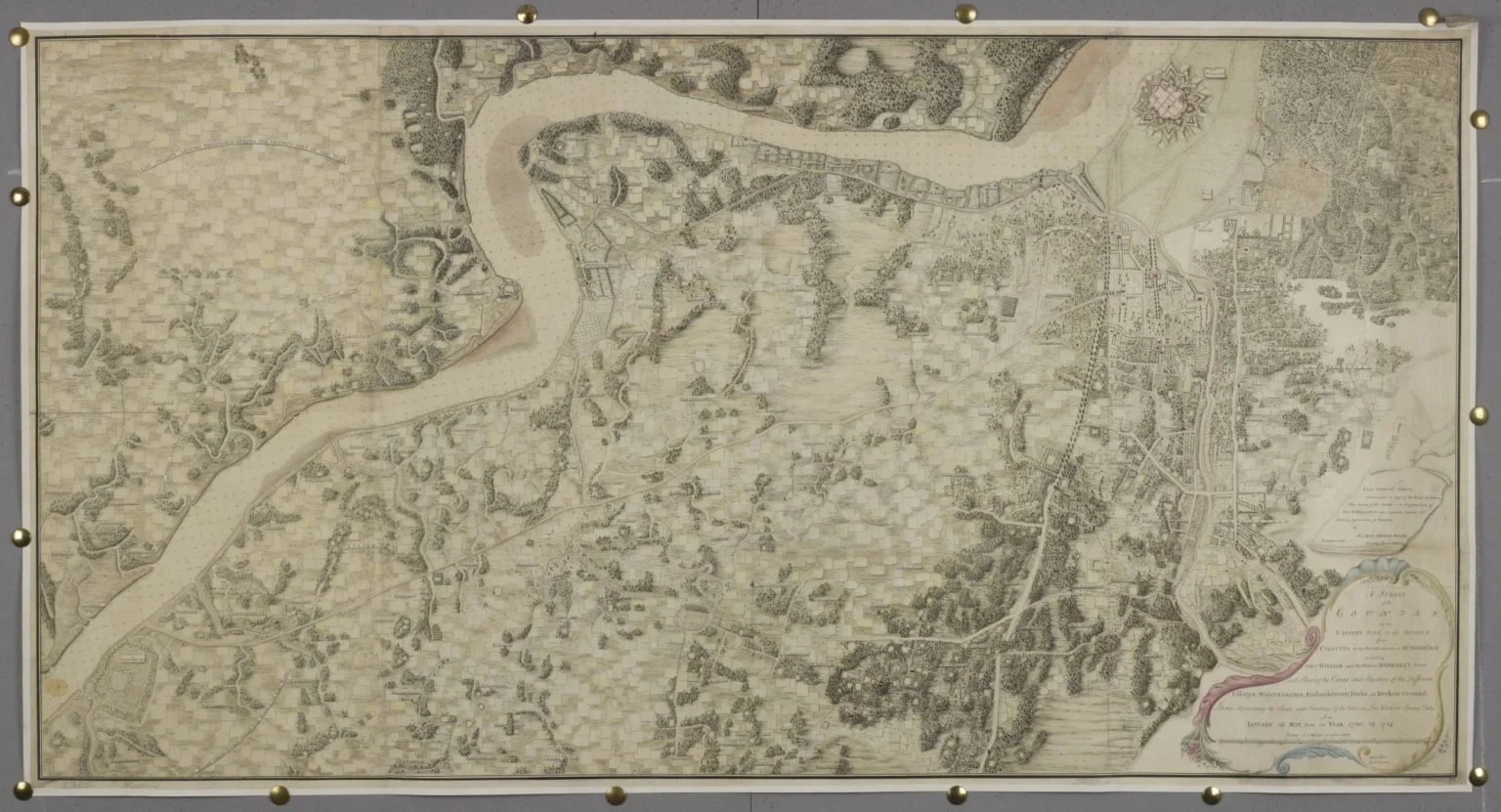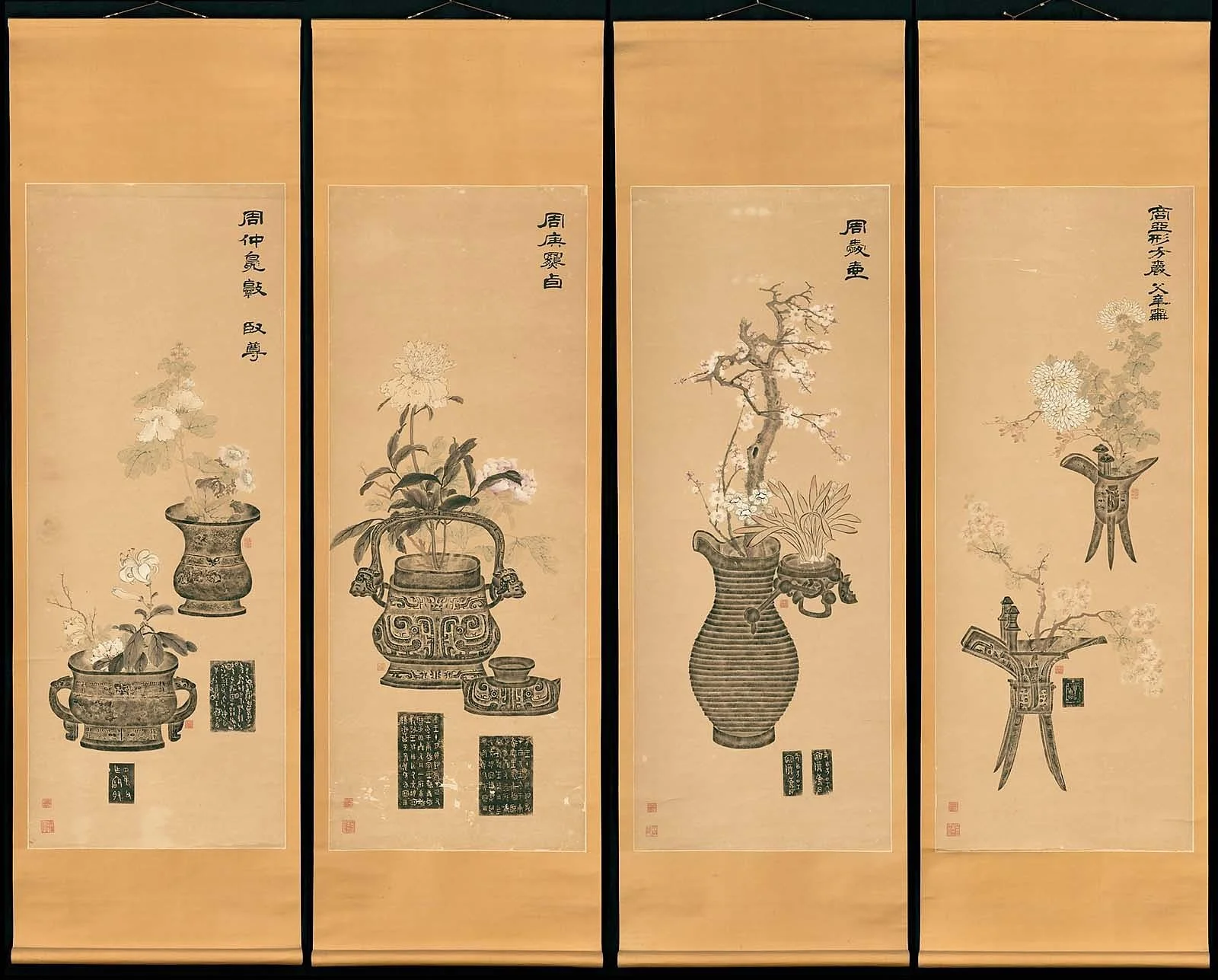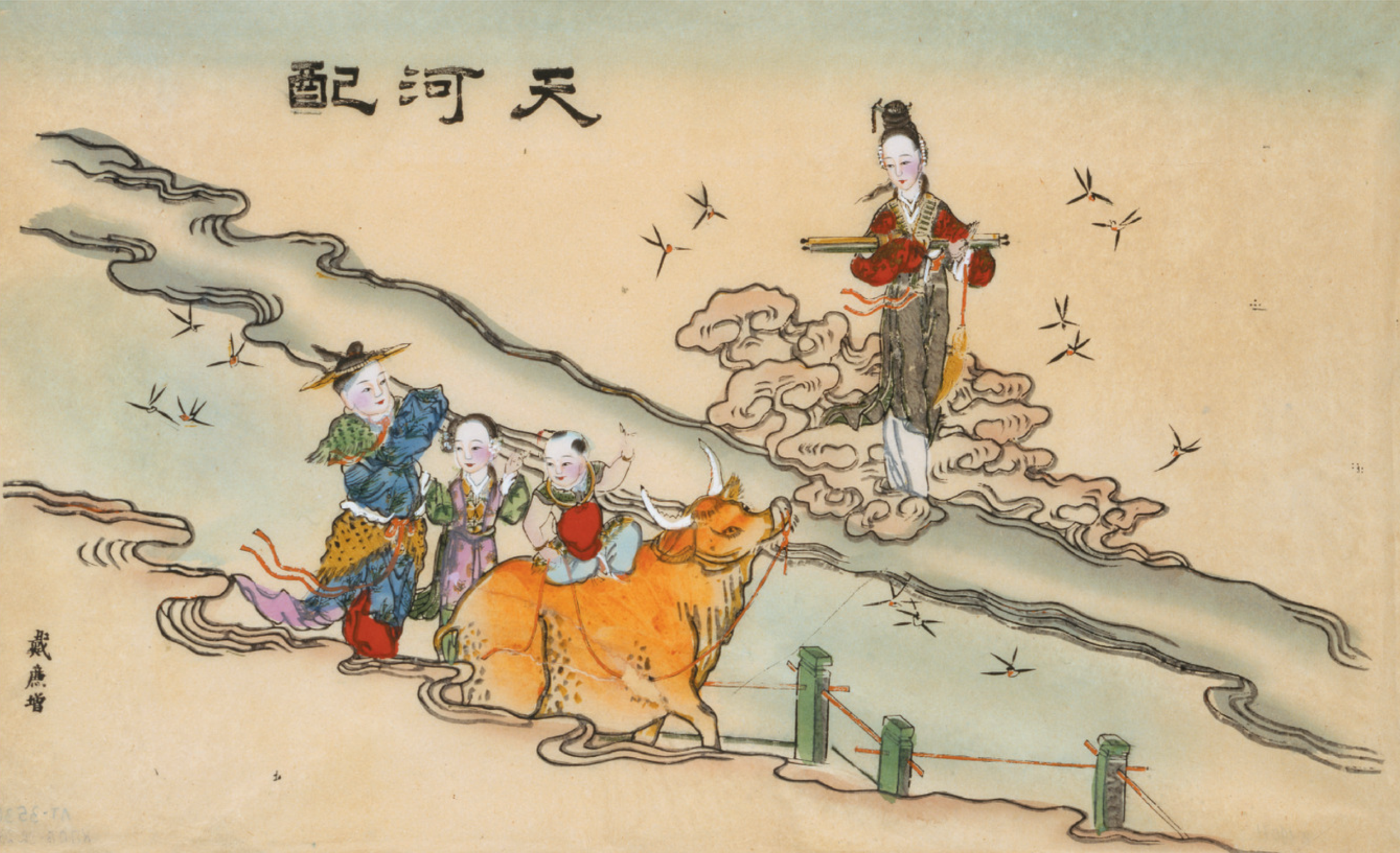Highlights

Staging the Supernatural Ghosts and the Theatre in Japanese Prints
The exhibition ‘Staging the Supernatural: Ghosts and the Theater in Japanese Prints’ is currently on view in Washington, DC, at the Smithsonian’s National Museum of Asian Art (NMAA; 23 March–6 October 2024). The origin of the exhibition dates back more than fifteen years but was buoyed into reality by two major acquisitions. The idea for a ghost-themed exhibition first came about while we were studying at the Inter-University Center for Japanese Language Studies in Yokohama in 2009 and 2010.

‘An Oriental Kiosk’: The Building of the ‘Arab Hall’ at Leighton House in London
A painter and sculptor of historical and classical subjects, Frederic Leighton achieved fame and success at a young age. His large painting Cimabue’s Sacred Madonna Carried in Procession through the Streets of Florence, completed in Rome in 1855, was considered one of the best pictures of the year at the Royal Academy of Arts in London and subsequently caught the attention of Prince Albert and Queen Victoria, who bought it for the considerable sum of 600 guineas (approximately £83,000 in today’s currency).

Cantonized Calcutta: Global Encounters in a Coffee Pot with a View of the Calcutta Waterfront
The year 1757 witnessed not only the victory of the British East India Company (EIC) at the Battle of Plassey and the subsequent conquest of Calcutta, but also the establishment of Canton as the sole legal port of the Qing dynasty (1644–1911) open to official trade with the West, under the ‘single port commerce system’ of the Qianlong emperor (r. 1736–95). Decades later, a gilded porcelain coffee pot with an underglaze-blue design of the Calcutta waterfront exemplifies the convergence of these two events, intertwining the narratives of the EIC, Calcutta, and Canton (Guangzhou).

Chronicles of Contact: Early Composite Rubbings from Zhang Tingji’s Writings on Collected Antiquities in the Pavilion of Tranquil Manner
The composite or full-form rubbing (quanxing ta) emerged in response to the methodological imperatives of antiquarianism in the late 18th to early 19th century of the Qing dynasty (1644–1911). The pursuit of precision—a byproduct of China’s engagement with Western science and indigenous intellectual movements—infiltrated the century’s antiquarian agenda and its historiography.

The Meeting of the Herd Boy and the Weaving Maid in Chinese Popular Prints
The seventh day of the seventh lunar month is one of the most significant dates in the Chinese traditional calendar. It is known as Double Seven day. The annual meeting of the two mythological lovers, the Herd Boy and the Weaving Maid, otherwise separated by the Heavenly Han River (the Milky Way), occurs at this time.

A Visit to the Buddhist Sites of Gandharan Pakistan
Between January 9 and 18, 2025, forty scholars participating in the first International Winter School on Gandharan Buddhism representing fourteen countries and twenty institutions had the rare opportunity to visit some of the historic sites of ‘Greater Gandhara’, a region that includes Taxila, the Peshawar basin, and Swat in northwest Pakistan. Although not a specialist in Gandharan art, I was fortunate to be able to join the group for an eleven day study trip that brought me full circle, having begun my graduate school studies in the 1970s under Benjamin Rowland and John Rosenfield, both American scholars of Gandharan art. At that time, the study of Buddhist art was based largely on fragments of narratives of the Buddha’s life or on iconic images of buddhas and bodhisattvas of lost or unknown provenance housed in museums.

Exhibition Review: Imperial Treasures: Chinese Ceramics of the Yuan and Ming Dynasties from the Mr. and Mrs. John D. Rockefeller 3rd Collection
This exhibition reflects a broader post-pandemic trend among Western museums the reinvigoration of permanent collections through fresh thematic lenses. Asia Society has a strong track record of organizing landmark exhibitions such as ‘Golden Visions of Densatil: A Tibetan Buddhist Monastery’ (2014) and ‘Kamakura: Realism and Spirituality in the Sculpture of Japan’ (2016). These shows blended Rockefeller collection pieces with loans from other institutions around the world. By contrast, ‘Imperial Treasures’ turns inward, yet without narrowing its scope.

Gazing at Sanxingdui: Interactions and Ritual Arts
The Sanxingdui site (c. 2500–900 BCE), located about forty kilometres north of Chengdu in Sichuan province, China, has been the focus of some of the most exciting archaeological work being done in China over the past three decades. In 1986, with the discovery of two pits containing tens of thousands of objects made from bronze, gold, and jade.

‘To praise it, one need only say it was from China’: Chinese Textiles in Portugal in the Early Modern Period
A significant number of Chinese textiles, dating mainly from the 17th and 18th centuries, can be found in Portuguese collections—both public and private—often existing in their original contexts of use. They are the result of the production and trade of Chinese textiles for the Portuguese market during the early modern period—and the enduring popularity those textiles experienced from the moment of their introduction.

Ubiquitous Trees and Snakes—Early Buddhist Imagery of Āndhradeśa
The early Buddhist art of Āndhradeśa, in the southeastern Deccan, is dominated by both symbolic and figurative representations of the Buddha and by the depiction of elaborate narratives—jātakas and avadānas—recounting the lives of past bodhisattvas and that of the historical Buddha. Yet there is another, no less pervasive presence in early Andhra Buddhist art, that of tree and snake imagery.

Interview with Mariana Teixeirade Carvalho and Becky MacGuire on the Albuquerque Foundation
The Albuquerque Foundation, envisioned by Brazilian collector Renato de Albuquerque and his granddaughter Mariana Teixeira de Carvalho, opened this past February. Located in Sintra, Portugal, the foundation is dedicated entirely to ceramics, housing one of the most significant private collections of export porcelain from the Ming (1368–1644) and Qing (1644–1911) dynasties: more than 2,600 pieces assembled over six decades by Renato de Albuquerque.

The Art of Mounting Calligraphy and Painting in the Court of Qianlong
The mounting of calligraphy and painting at the imperial courts of past dynasties often developed in line with emperors’ personal preferences and the courts’ creation and collection of calligraphy works and paintings. For example, during the Xuanhe period of the Northern Song dynasty (960–1127), Zhao Ji, the Huizong emperor (r. 1100–26), was addicted to calligraphy and painting art, being outstanding in these two fields himself.

Tao Yuanming Returning to Seclusion: The Tale of Charles Lang Freer’s ‘Most Interesting and Beautiful Scroll’
If narrative paintings could talk, Tao Yuanming Returning to Seclusion (Fig. 1, section 1) would have multiple stories to tell—starting with how it came to be part of the first major American collection of early Chinese paintings, assembled by the Detroit industrialist Charles Lang Freer (1854–1919), who donated his collection to the Smithsonian Institution and founded the Freer Gallery of Art.

Canton Enamels: Markets and Patronage
A Western art form imported to China after the opening of the seas, painted enamel metalwares evidence the exchange and interaction of personnel, techniques, raw materials, and artistic styles among the court, Guangzhou (Canton), and Jingdezhen, with forms, designs, and colours provided by both China and the West. Enamels were regarded as a rarity from the East that enchanted nations, winning acclaim in foreign lands and places.

Historical Mapping of Guangdong and Guangzhou
Historical maps of Guangdong, a seaboard province in southern China, belong within several map lineages associated with Ming (1368–1644) and Qing (1644–1911) cartographic projects that include new surveys as well as those related to maritime trade and coastal defence of the region. The numerous large and small ports along its coast have long participated as terminal and transit points in many maritime trade routes; meanwhile, its largest coastal city, Guangzhou (Canton), has long been an important trading and diplomatic port.

Exhibition Review: Sensing the Buddha at the Musée de Mariemont
‘Sensing the Buddha’, an exhibition at the Musée de Mariemont (21 September 2024 to 20 April 2025) does not concern itself with Buddhism solely in the abstract and the formalistic.

Chinese Trade in the Red Sea: Two Shipwrecks with Yuan Blue-and-White Porcelains
Shards of Chinese ceramics, from the Tang (618–907) through the Qing (1644–1911) dynasty, have been excavated in various harbours and emporiums of the Persian Gulf, Oman, Yemen, Red Sea, and western Africa, showing that the commerce connecting East and West through the Red Sea was continuing to follow the trading routes already established in the Roman period.

A Tribute to Robert Chang Chung Shien (1927–2024)
In the field of Chinese art, the name Robert Chang Chung Shien brings a sense of awe and evokes an unequivocal sense of respect among later generations. He surpassed and outlived all his advocates and severe critics of his own generation.

Morphing Landscape: Hong Xian’s Ink Abstraction
In the second half of the 20th century, Houston-based artist Hong Xian (Margaret Chang, b. 1933) crafted a remarkable corpus of abstract ink paintings. By the late 1970s, her work had reached a wider audience in the United States through solo touring exhibitions organized by Chu-tsing Li (1920–2014), a Chinese American art historian and active promoter of young modernist artists from Taiwan and the United States.

Interview with Artist Arnold Chang and Exhibition Curator Clarissa von Spee
My process is different from many contemporary Chinese ink painters. I don’t begin with a clear image in my mind. I generally just start by making a few lines and then allow the brush to lead me. I react to the textures that naturally arise from the interaction of the ink and paper.
